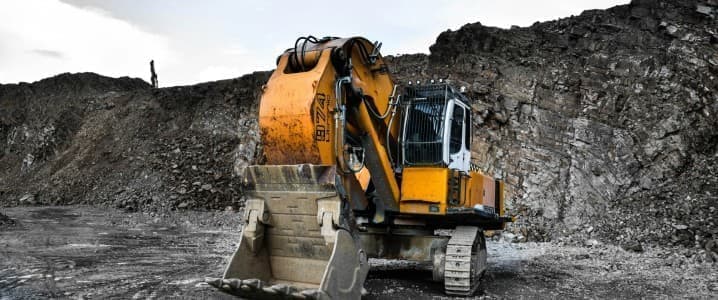
Not only is the world’s second largest economy resisting calls to phase out coal – they’re revolutionizing it. One Chinese company has gone all in on artificial intelligence to run its coal mining operations – and now it’s raking in more profits than your average investment bank. Even with coal prices in decline, the mine posted a 40% profit margin in 2024. With the one-two punch of energy security and profitability, coal is likely here to stay in the Chinese energy mix, climate pledges be damned.
The Dahaize Mine in China’s Shaanxi province is “rewriting the rules of the industry” according to a recent report from the South China Morning Post. The mine is operating with a skeleton crew thanks to its all-out bet on automation. As a result, Dahaize CEO Liang Yunfeng says that each individual worker now produces almost $1 million worth of output annually.
Artificial intelligence is being used to navigate and carve out coal seams with extreme precision, while drones inspect shafts at lightning speeds and robots conduct repairs. In addition, “autonomous trucks, guided by an underground positioning system, navigate foggy, dust-choked tunnels to ferry coal to AI-powered washing plants, where one worker can process 1,100 tonnes of coal per day,” according to the South China Morning Post.
This highly lucrative revolution in coal mining techniques is, unsurprisingly, coinciding with rapid approval of new projects across China. China alone represented 93% of global construction starts for coal power in 2024, according to figures from the Global Energy Monitor and the Centre for Research on Energy and Clean Air. Indeed, the Chinese government approved 66.7GW of new coal-fired power capacity last year. To put this figure in perspective, a large coal power plant produces about one gigawatt.
This doubling down on coal also comes at the same time that global leaders are pleading with China to cut back on the dirtiest fossil fuel. “Commentators outside China are increasingly puzzled at the continued containment of domestic renewable generation in future stranded coal assets,” said Jorge Toledo, the European Union’s ambassador to China.
But China is making no promises to cut back, and no efforts to conceal its continued dedication to coal-fired power. “Official announcements make it clear that China is unwilling to fully decarbonise in the near future,” the Guardian recently reported, pointing to a recent Chinese government publication stating that the country will “continue to increase coal production and supply capacity, and consolidate the basic supporting role of coal”.
At the same time, China is far and away the global leader in clean energy spending and development, and renewable energies have been critical to China’s economic growth in recent years. In fact, experts anticipate that China will reach peak emissions even before its stated 2030 target. Last year, China’s spending on clean energy alone rivalled the entire globe’s spending on fossil fuels. However, about 70% of China’s energy mix still comes from fossil fuels, as the actual integration of renewable energy sources lags far behind added capacity.
China’s energy decisions have major implications for the rest of the planet, as it is now “the world’s largest consumer of energy, the largest producer and consumer of coal, and the largest emitter of carbon dioxide.” Meeting global climate goals will not only require that China continue its truly impressive clean energy expansion, but that it dramatically shrink its carbon footprint as well. And the government’s commitment to coal, and to futurizing coal mining through automation, does not bode well for planetary wellbeing.
But what’s happening at the Dahaize mine is about much more than just coal and carbon emissions. It’s sending a much bigger message about an increasing automated economy within China and beyond. “Dahaize proves that smart tech can sustain both productivity and profitability – even as Western economies struggle with wage inflation,” writes the South China Morning Post.“There is a growing consensus among China’s industrial experts that if the West clings to existing labour practices, the productivity gap will hollow out its middle class.”
By Haley Zaremba for Oilprice.com
More Top Reads From Oilprice.com






